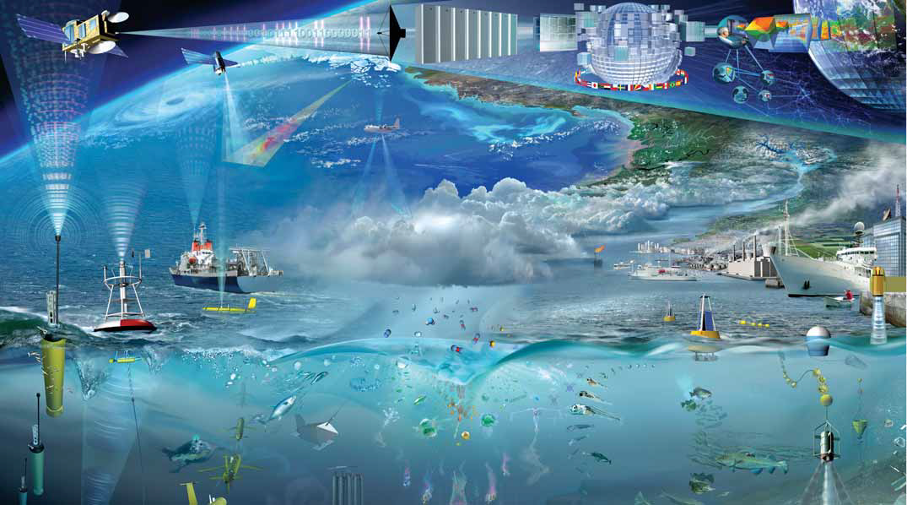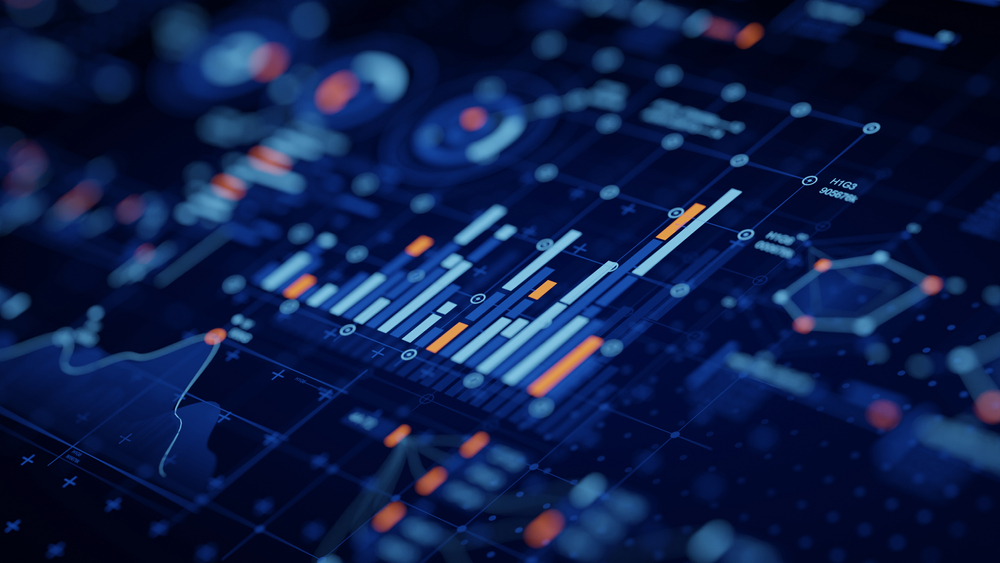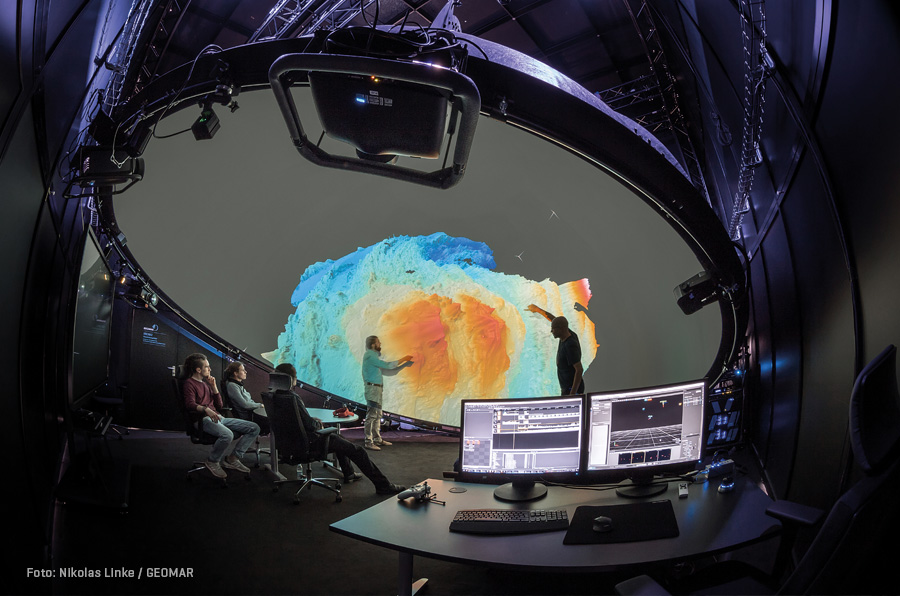Digital twins (DTs) are virtualisations or representations of physical objects andsystems - their physical twin. They track their physical twin as it changes, and - based on a deep understanding of the physical twin’s composition and properties - also allow users to simulate how the digitised system would react to hypothetical (“what if”) scenarios. Digital twins have been widely applied in the engineering realm for tasks such as engine optimisation and port management, helping bring data to life and accelerating development.
However, DTs are relatively new in the realm of environmental sciences. Thanks to recent advances in digitalisation and improvements in model performance, Earth system scientists are envisioning the development of Digital Twins of the entire Earth system, including the Oceans, as a method to monitor and lessen the blow of climate change impacts.
This connection between the digital twin and their real counterparts requires a well-formulated interface between the digital twin, environmental data, and the user. User interaction is therefore an essential function that is embedded in the design of digital twins, including visualisation, user-driven data transformation and data-science tools.

The building blocks
Observing system
Digital twins are data hungry and require an observing system around their physical twin to keep up-to-date. Such observing systems must be co-designed by both the users and developers of the digital twins, to ensure relevance and accuracy.
As the link between the digital twin and the observing system evolves, they can begin to guide each other’s development and optimisation.


A Data space
Complementing the data streams from observing systems, digital twins will draw from a dynamic, distributed, and diverse pool of data, software, models and other digital assets (including other twins). Thus, a robust and open digital exchange system must be in place to support efficient data and information transfer.
The more standardised and interoperable each class of assets are, the greater their discoverability and potential for re-use by multiple digital twins.
Data analytics and prediction engine
A data analytics and prediction engine maximises the understanding and value from these observational data through predictive modelling, emulation, artificial intelligence (AI), and machine learning (ML).
Digital twins incorporate the additional capacity for the user to modify the prediction engine to explore options, “what if” scenarios, and consequences.


Credits: Nikolas Linke - GEOMAR
An interactive provisioning layer
An interactive and provisioning layer allows users to visualise, interact with and tailor the data, scenarios and models to meet their needs. They are a powerful interface to the information and tools in the data engine that are easy to adapt and use, and represent one of the characteristic features of digital twinning. These provisioning layers are tailored towards human users and are often visually pleasing front-end interfaces with easy, intuitive access.
Machine-to-machine provisioning is also common, in which case the provisioning layer is tailored to enable federation with other twins or systems.
Moreover, developing digital twins will require an outreach and training capability to enable full participation of developers, experts and users in digital twins’ environments respecting the capabilities and realities of the diverse international communities.
Literature
Further reading
- Bauer, P., Stevens, B., & Hazeleger, W. (2021). A digital twin of Earth for the green transition. In Nature Climate Change (Vol. 11, Issue 2, pp. 80–83). Nature Research.
https://doi.org/10.1038/s41558-021-00986-y - Blair, G. S. (2021). Digital twins of the natural environment. Patterns, 2(10). https://doi.org/10.1016/j.patter.2021.100359
- el Saddik, A. (2018). Digital Twins: The Convergence of Multimedia Technologies. IEEE Multimedia, 25(2), 87–92.
https://doi.org/10.1109/MMUL.2018.023121167 - Fuller, A., Fan, Z., Day, C., & Barlow, C. (2020). Digital Twin: Enabling Technologies, Challenges and Open Research. IEEE Access, 8, 108952–108971.
https://doi.org/10.1109/ACCESS.2020.2998358 - Nativi, S., & Craglia, M. (2020). Destination Earth Use Cases Analysis.
https://doi.org/10.2760/17457 - Nativi, S., Mazzetti, P., & Craglia, M. (2021). Digital ecosystems for developing digital twins of the earth: The destination earth case. Remote Sensing, 13(11).
https://doi.org/10.3390/rs13112119 - Siddorn, J., Blair, G., Boot, D., Buck, J., Kingdon, A., Kloker, A., Kokkinaki, A., Moncoiffe, G., Blyth, E., Fry, M., Heaven, R., Lewis, E., Marchant, B., Napier, B., Pascoe, C., Passmore, J., Pepler, S., Townsend, P., & Watkins, J. (2022). An Information Management Framework for Environmental Digital Twins (IMFe).
www.metoffice.gov.uk/binaries/content/assets/metofficegovuk/pdf/research/approach/r-i_strategy_full_version_v2.pdf - Tao, F., & Qi, Q. (2019). Make more digital twins. Nature, 573, 490–491.
https://doi.org/10.1038/d41586-019-02849-1 - Wright, L., & Davidson, S. (2020). How to tell the difference between a model and a digital twin. Advanced Modeling and Simulation in Engineering Sciences, 7(1).
https://doi.org/10.1186/s40323-020-00147-4